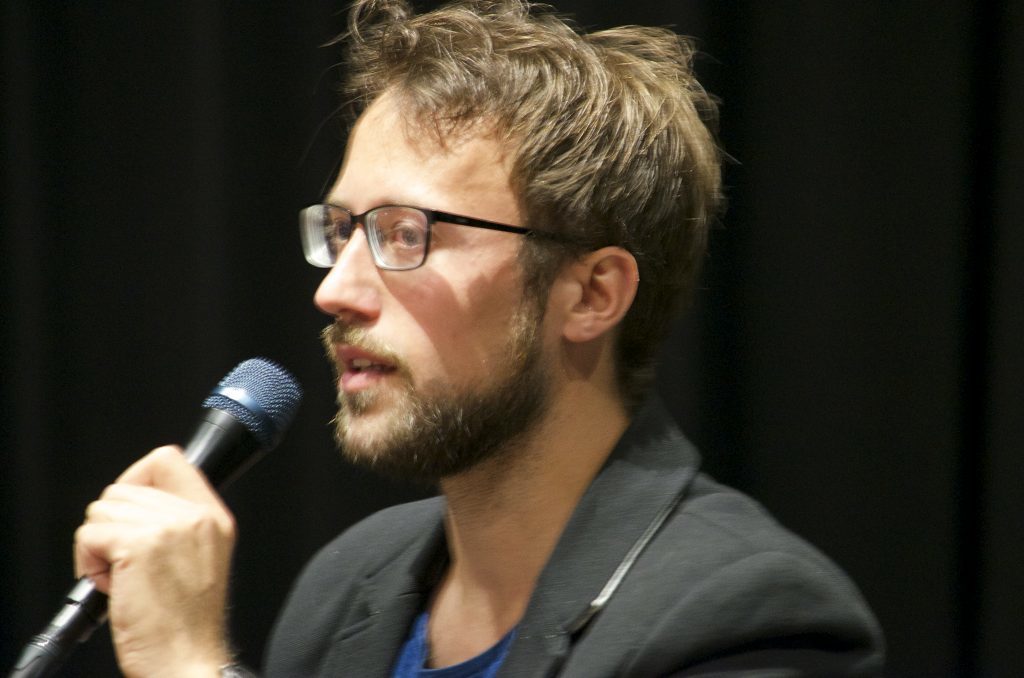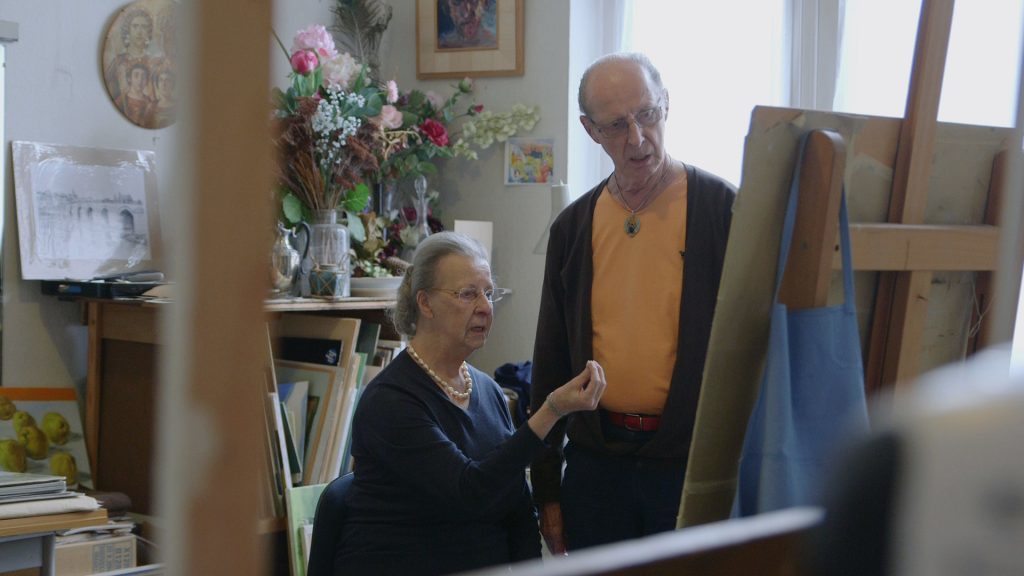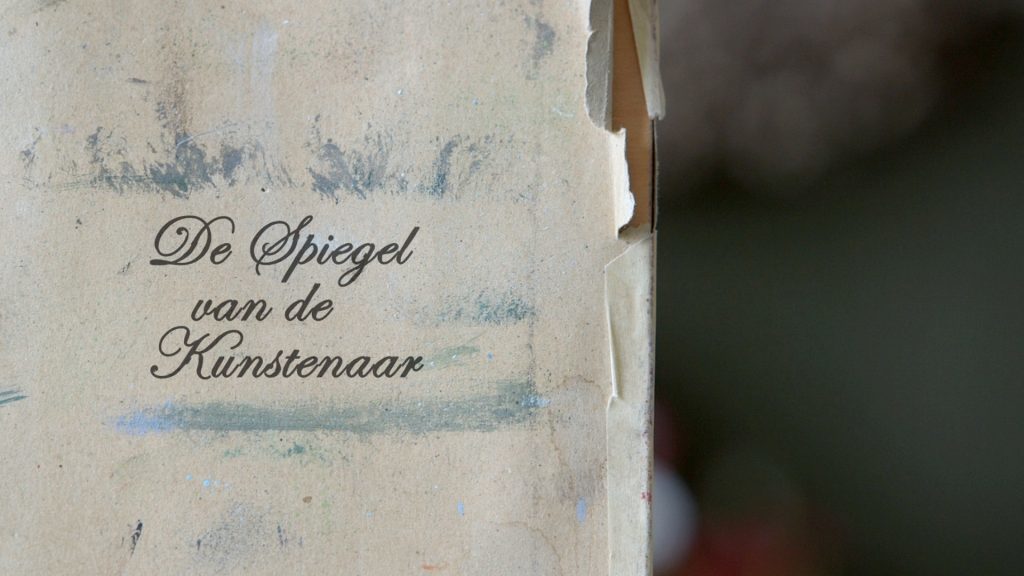
Case Study: The Mirror of the Artist
Tamino Parren talks about his short film.
Geplaatst op 5 februari 2018Tamino Parren (1988) was born in Zaandam, The Netherlands. He went to the Academy of Graphic Design in Utrecht to study Film and Animation Techniques. There he developed an interest in documentary filmmaking. After his graduation he began to study at the Academy of Fine Art & Design St. Joost in Breda and graduated in 2013 as a documentary director.
In 2014 he worked as a director/editor and cinematographer on short documentary portraits of artists, for a Dutch television program Docwerk.tv, commissioned by Omroep Brabant. Since then he has been working as a freelance director and cinematographer on various (documentary) projects. In his films he often tries to make the audience part of long observations. As if one becomes a voyeur in another person’s life. Most characters in his films have chosen for an eccentric lifestyle. Tamino is fascinated in the way people relate to each other and to their environment, against their own personal choices.

How did the idea for this film come to you?
“The idea to make a film about Hans Hansen came to me a few years ago. Hans used to work as a teacher at the Acadamy of Fine Art & Design in Maastricht and many years ago my father was his student. A few years ago they met each other again and so I met Hans as well. He told us that he lived with his sister for over 35 years already. When I visited his house for the first time, I was immediately fascinated by the interior and the way his paintings were part of it.”
“Everything seemed to be in place and precisely positioned. His sister Bernie was a very caring person, she made us feel welcome and made coffee and biscuits. But every wall and corner in the house seemed to be decorated with Hans’ own paintings and I became curious to Bernie’s opinion and her role in their household. Last year I asked them how would they feel to make a short documentary about their way of living and the role of art in their life.”
What was the process of writing the script like?
“I wrote a first draft for myself how I wanted to make this portrait and the story that I personally wanted to tell. But eventually during shooting I tried mainly to be an observator and to watch and see how they cope with each other when Hans is working on a painting.”

How did you tackle the production process?
“During my research I became aware that Bernie might had a lot more influence on Hans’ work then he would like to admit. Hans did tell me that Bernie often just opens the door of his room when he is working on a painting and then gives her opinion about it. So when I started shooting, I knew that the moment when Bernie decided to criticize his work, that could result in an interesting scene. But I was also surprised because before that moment, Hans was working on a painting of flowers and seemed very certain of his choices. Though every part of his paintings is clean and fresh, still he decided to add an autumn (brown) leaf to the painting. Then Bernie came to have a look and Hans was suddenly a lot less certain of himself. She corrects his desire to imperfection by telling him to remove the brown leaf, because it’s not fresh. Hans decided to remove it immediately, so the painting would be ‘perfect’ again.”
What preperations did you make for this project?
“This project started as an autonomous project, so therefore I didn’t have a budget to begin with. Because I knew which story I wanted to tell and also because Hans and Bernie are already at a very respectable age, I decided to still make the film on my own. Apart from the research, everything was shot in one day.”
Did you encounter any problems during shooting?
“Shooting went very well, although Bernie initially wasn’t sure she wanted to participate in the film. She wasn’t sure if she wanted to be in front of a camera. But when I told her that I thought she had a very important role in the position of Hans as an artist, she was willing to participate.”

Can you tell us something about the post-production process? How did you approach the edit?
“During the editing I tried to be truthful to what fascinated me to these two people in the first place. Therefore I tried to make a structure for the film that was loosely based on the first draft that I wrote for the film. I decided to introduce the ‘mirror’ literally at first. Slowly the audience becomes aware that the real mirror is actually a person.”
“Visually I tried to make a structure that was based on perfection versus imperfection. In the beginning of the film everything seems perfect: the interior, the paintings, the hallway, the stairs, the flowers. I tried to show every moment of imperfection only in sound. In the opening scene we hear Hans is snoring on the couch for example, but we don’t see him yet. Later in the film, Bernie is making a phone call (presumably with another member of their family) and she talks about a serious topic: Alzheimer’s. Yet we don’t see her making this phone call, we can only hear it. But then Bernie gives her opinion about her brother’s work, and after that we get to know more of these two people on a personal level. Slowly, imperfection integrates into the film and the audience becomes aware of their relationship.”
How did you work with sound and music? Did you have a composer or take music from stock?
“During the editing I asked Hans to what kind of music he likes and he told me that it was mainly (light) classical music that he’d prefer. I decided to add the Canon in D by Johann Pachelbel as the main theme, because it sort of represents a clean feeling and lightness that would match with the cinematography of the film.”
Did you make a color correction?
“Some shots needed color correction of course, because the lightning wasn’t always the same. But during shooting I tried to work mainly with natural light. Because of the way the light approaches the rooms in the house, I was able to take a step back with the camera. It results in a more voyeuristic way of looking, which I thought suited very well for this film.”

What festival distribution did you have?
“I finished the film in October last year, so the festival distribution has basically started since then. Because I produced this film mainly by myself, I’m trying to send the film to festivals that I like and of course I hope that the film will find it’s place to be seen. Thus far, the film has also been selected for DOCFeed Documentary Film Festival in Eindhoven.”
And last but not least: do you have any tips for directors?
“Writing is essential for any (documentary) filmmaker, because it forces you to know the exact angle of approach for your film. But if you’re a documentary director and you have a good idea, a setting, possibly already a character and a vision of how to tell your story, then don’t let anything stop you from making it. Financing your film can take time and if you have a setting/arena or a character that goes through a development that you think is crucial for the story that you want to tell, then start shooting!”